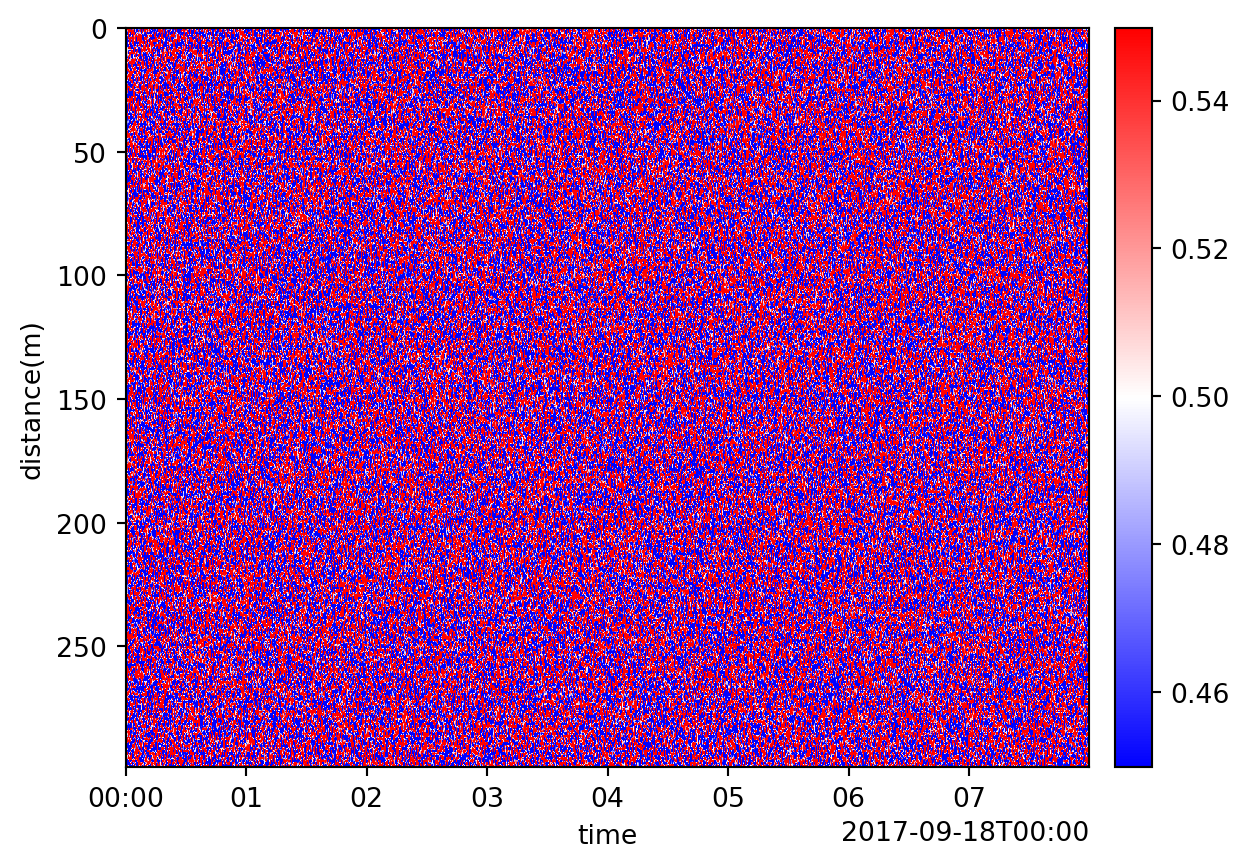# Plot the default patch
import dascore as dc
patch = dc.get_example_patch()
_ = patch.viz.waterfall(scale=0.1)
| function of dascore.viz.waterfall | source |
waterfall(
patch: Patch ,
ax: matplotlib.axes._axes.Axes | None[Axes, None] = None,
cmap = bwr,
scale: float | collections.abc.Sequence[float, collections.abc.Sequence[float], None] = None,
scale_type: Literal[‘relative’, ‘absolute’] = relative,
log = False,
show = False,
)-> ‘plt.Axes’
Create a waterfall plot of the Patch data.
| Parameter | Description |
|---|---|
| patch | The Patch object. |
| ax | A matplotlib object, if None create one. |
| cmap |
A matplotlib colormap string or instance. Set to None to not plot the colorbar. |
| scale |
If not None, controls the saturation level of the colorbar. Values can either be a float, to set upper and lower limit to the same value centered around the mean of the data, or a length 2 tuple specifying upper and lower limits. See scale_type for controlling howvalues are scaled. |
| scale_type |
Controls the type of scaling specified by scale parameter. Optionsare: relative - scale based on half the dynamic range in patch absolute - scale based on absolute values provided to scale
|
| log | If True, visualize the common logarithm of the absolute values of patch data. |
| show | If True, show the plot, else just return axis. |